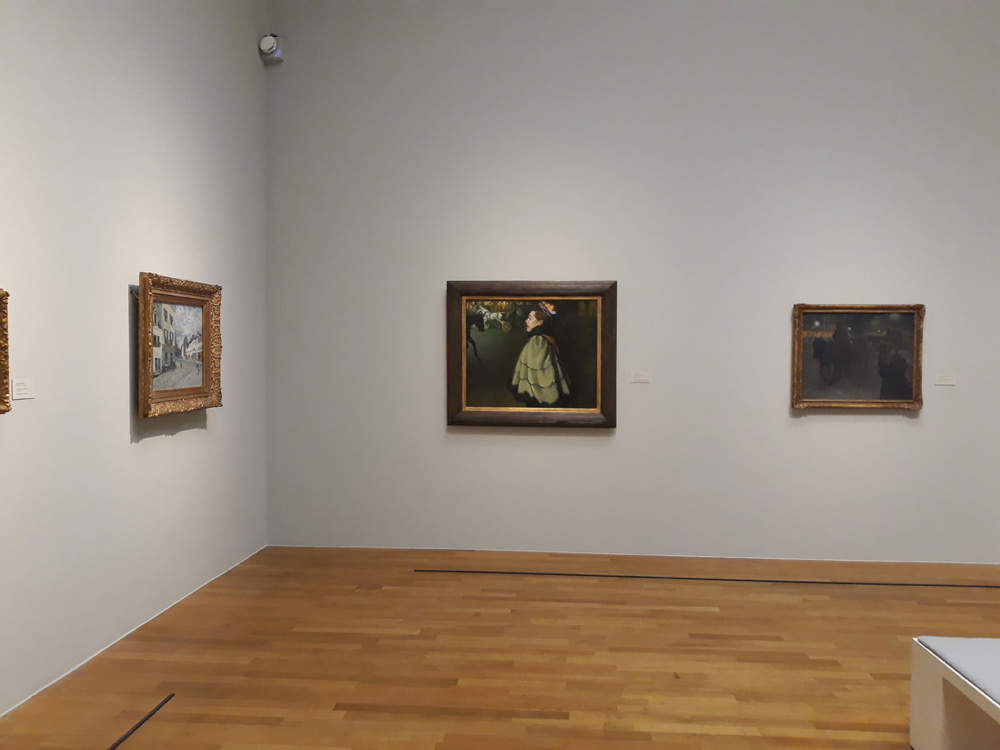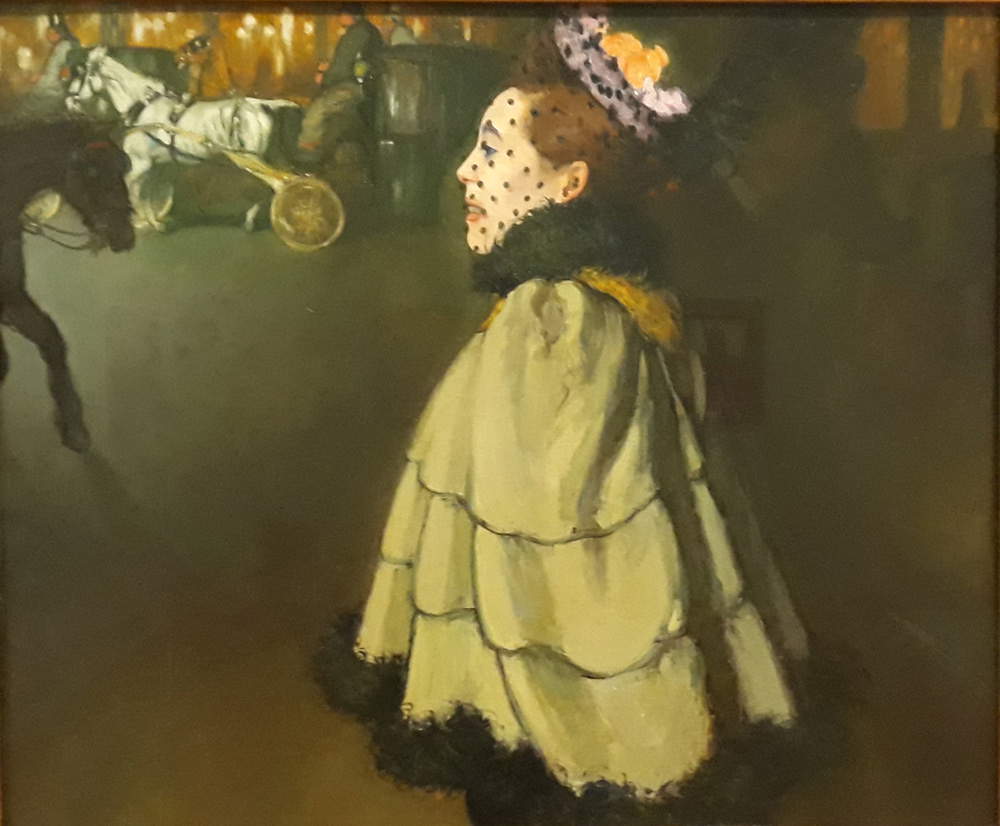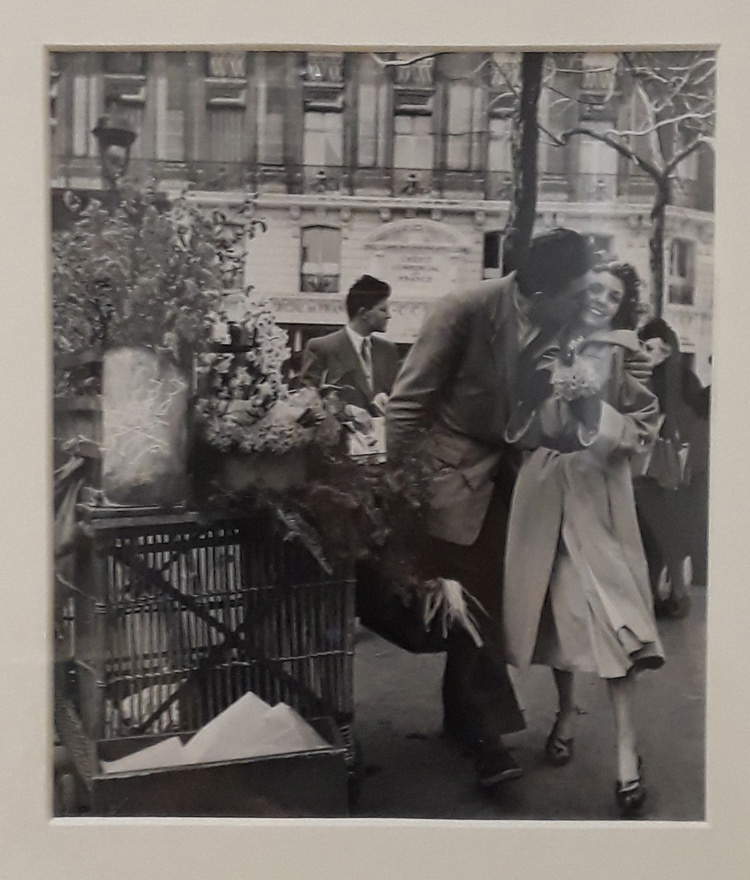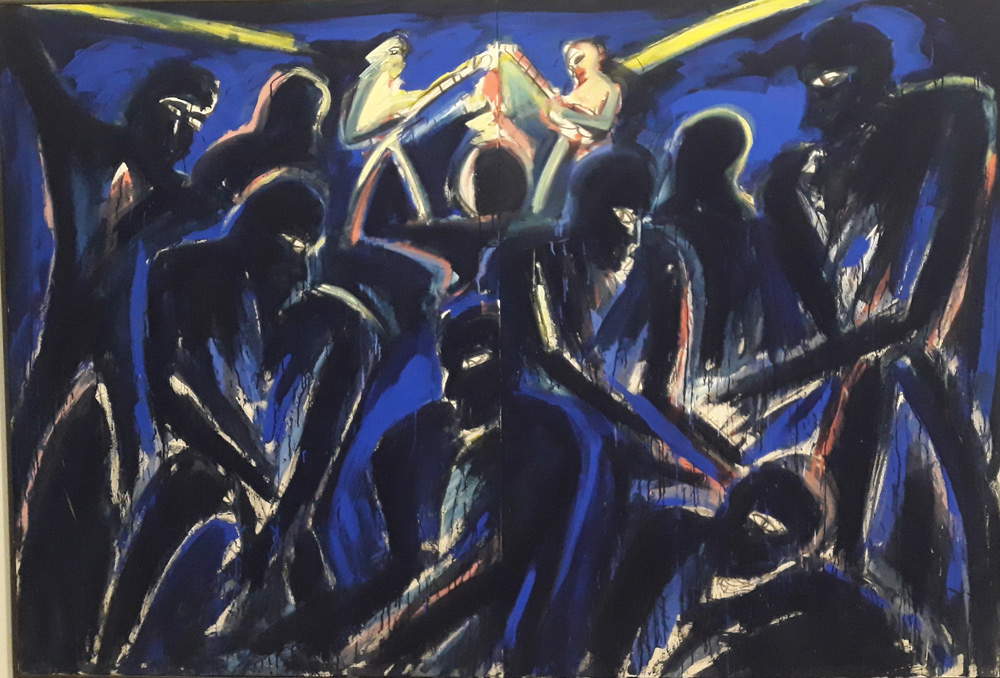Despite being a small city of just over 300,000 inhabitants in Germany’s North Rhineland, in recent years Bonn has been offering its residents and numerous tourists exhibitions of a certain caliber. After the retrospective devoted to Marina Abramović at the Bundeskunsthalle, it is the turn of Der Flâneur. Vom Impressionismus bis zur Gegenwart (The Flâneur. From Impressionism to the Present), which can be visited from September 20, 2018 until January 13, 2019 at the German city’s Kunstmuseum.
The exhibition has a fairly atypical theme in that it focuses on the figure of the flâneur, a term used by Charles Baudelaire to refer to the citizen/artist who wandered the streets of Paris, deriving his own delight from this wandering. The original literary motif of the flâneur is thus linked to the evolution of the urban context: the flâneur becomes a keen observer of it, so much so that he himself is the eye of the city where he lives and the eye through which the city itself is reflected and observed. The aimless wandering of the flâneur through streets and squares, capturing the impressions of the moment, is evidence of the constant and hyperaccelerated growth of large cities and metropolises since the beginning of modernism.
 |
| Admission to the exhibition Der Flâneur. Vom Impressionismus bis zur Gegenwart. Ph. Credit Francesca Della Ventura |
 |
| First exhibition hall, theme The Cities. Ph. Credit Francesca Della Ventura |
 |
| First exhibition hall, theme The Cities. Ph. Credit Francesca Della Ventura |
Der Flâneur. Vom Impressionismus bis zur Gegenwart addresses not only the figure of the flâneur from a historical point of view, but also analyzes its evolution from the birth of the character (corresponding roughly to the appearance of Impressionism) to the present age. As many as 68 artists are represented in the exhibition, which is a must-visit if you are passing through Bonn, with works from the late 19th century to the end of the 21st century: Lovis Corinth, Robert Doisenau, Max Ernst, Vincent Van Gogh, George Grosz, Karl Horst Hödicke, Ernst Ludwig Kirchner, August Macke, Helmuth Middendorf, Camille Pisarro, August Sander, and Thomas Struth are just some of the artists whose works crowd the exhibition walls of the Kunstmuseum Bonn.
The exhibition is divided into six thematic chapters: in the first, The Cities, we look at the daily life of European metropolises (Paris and Berlin, at the end of the 19th century metropolises of the flânerie) and the people who live them. The second chapter is entitled The ’Individual and the Crowd and focuses on the flâneur both as an individual and as part of a multitude: the works in this section show the relationship between the self and others as the underlying motif of the representation of the flâneur in art history to the present day. The World of Commodities, the third part of the itinerary, depicts the flâneur in the shoes of the dandy who, walking the great boulevards of cities, wants to be independent of the economic imperatives imposed by industrial society. The latter’s observation of the goods displayed in store windows is free from utilitarian thinking directed toward the consumption of the good, as shown in the works of August Macke, in which the pure contemplation of the goods on sale transforms them into pure visual objects. In the fourth section, Passers-by and Galleries, the focus is on the image of the city that emerges through the movement of the flâneur, a passer-by who constantly alternates his observation of the city’s reality between details and particular views. The penultimate section of the exhibition itinerary is titled Streets and Squares and focuses on the focal point of the flâneur’s city walk: in the works of the selected artists, the city manifests itself as a system of streets, corners, lines, buildings, and squares in constant movement that lead to the loss of the protagonist himself, transforming the environment familiar to him into something foreign. Finally, in the last part, The Flâneur Today, the meaning of the exhibition itself emerges: in today’s society, in which the frenzy of everyday life predominates and in which the need to carve out time and space for oneself is strongly felt, the figure of the flâneur becomes relevant after decades of absence from literature and the collective imagination. This revived interest, the catalog notes, is a product not least of the increasingly rapid pace of our lives, now dictated entirely by the ’economy, to whose perspective the flâneur offers an antidote.
 |
| Louis Anquetin, Femme sur les Champs �?lisées, la nuit (1890-91; oil on canvas, 83.2 x 100 cm) |
 |
| Robert Doisneau, La plus stricte intimité (1945; gelatin silver print, 32.2 x 21.7cm) |
 |
| Helmut Middendorf, Gro�?stadteingeborene (1979; mixed media on canvas, 189.5 x 280cm) |
The merits of this important German exhibition are several: as already anticipated, not only the atypical and new exhibition theme, but also the impressive number of works selected and perfectly connected to each other and integrated within the ’reference section contribute to make it an enjoyable and culturally enhancing experience. Loans from national and international museums are equally significant: just to name a few, we have the Musée d’ Orsay in Paris, the Tate in London, and the Thyssen-Boernemisza Museum in Madrid. For the visitor, in fact, the material available (paintings, engravings, photographs, installations) is particularly fruitful and contributes to a broadened knowledge of the art of the last century and a half. The excellent intuition had by the curators, Volker Adolphs and Stephan Berg, was to recreate, within the exhibition itinerary, continuous comparisons between the ’today’s observer/visitor and the flâneur of the past and references between the works themselves: the image of the Parisian Rue de Rivoli recurs, for example, several times within the exhibition, highlighting its evolution and change over time.
Last but not least in order of importance, another great merit of the curators of Der Flâneur. Vom Impressionismus bis zur Gegenwart is that of having included and integrated within the exhibition some paintings made between the late 1970s and early 1980s, historicizing them: the presence of the works of Rainer Fetting, Helmut Middendorf, Karl Horst Hödicke in fact marks a turning point for the recovery and understanding of the art of this decade, often absent within museum exhibition itineraries except in thematic exhibitions - as, erroneously, still considered kitsch.
Warning: the translation into English of the original Italian article was created using automatic tools. We undertake to review all articles, but we do not guarantee the total absence of inaccuracies in the translation due to the program. You can find the original by clicking on the ITA button. If you find any mistake,please contact us.